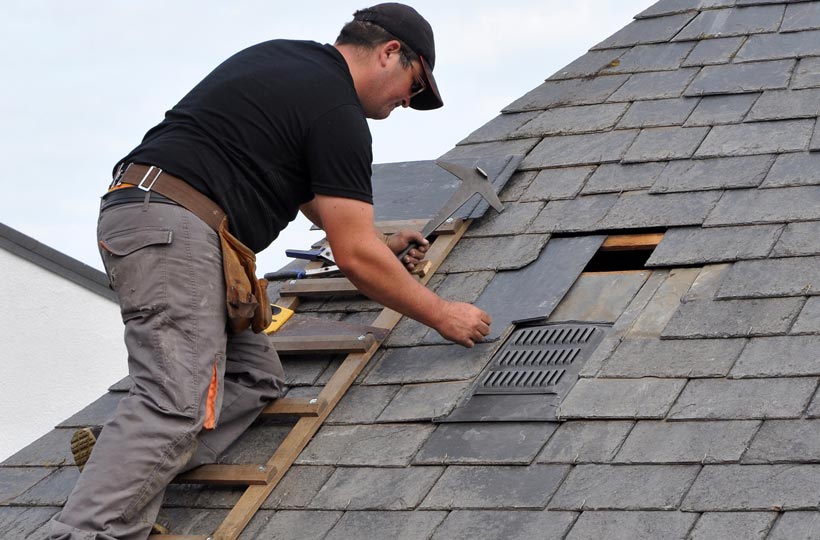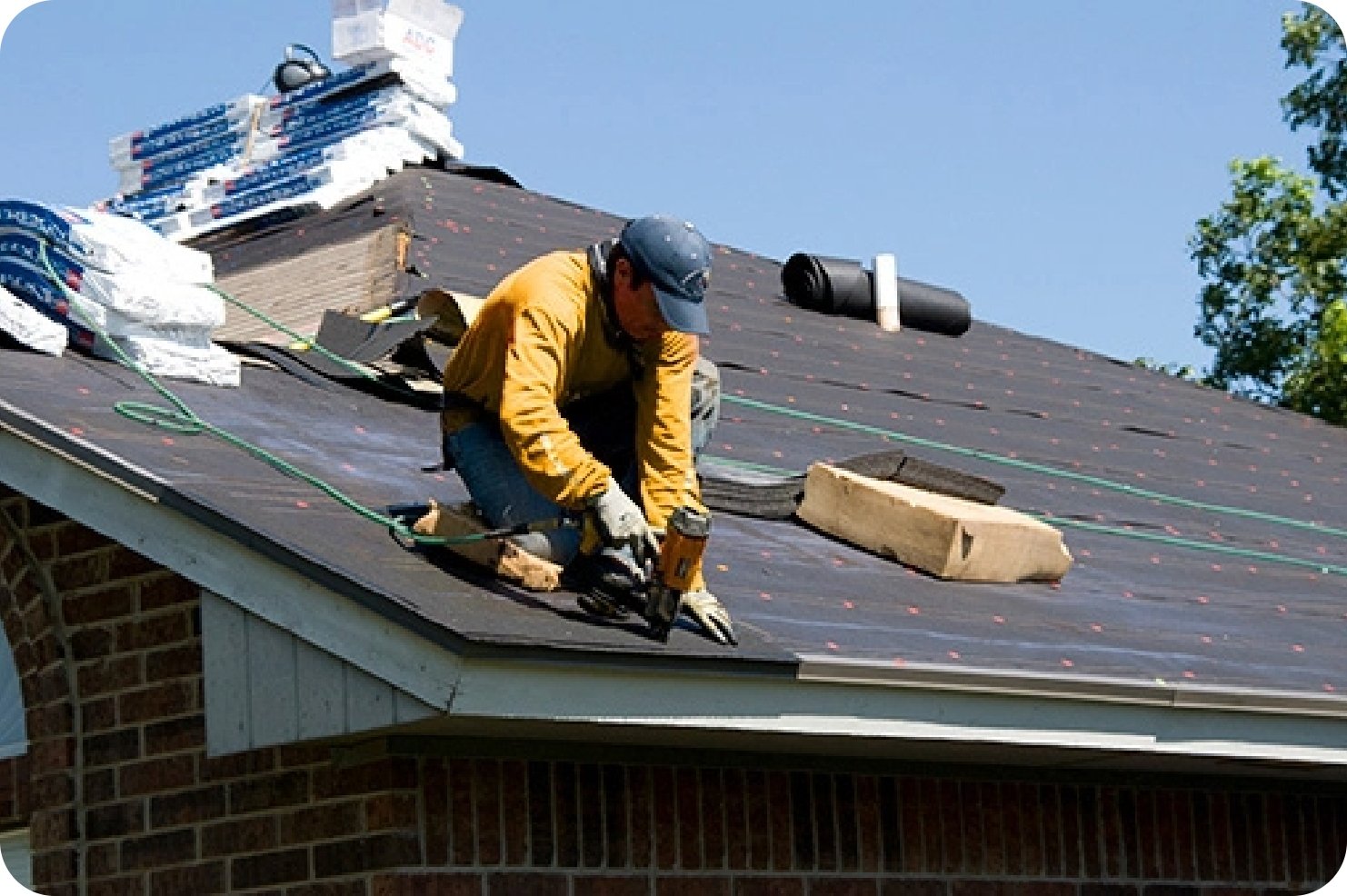Seasonal Roof Covering Repair Work Checklist: Prepare Your Roofing for every single Climate
To prepare your roof covering for every weather period, begin with a comprehensive inspection prior to winter season. As spring arrives, make particular all rain gutters are tidy and examine for loose ceramic tiles. Learning about common roofing concerns and when to call an expert can assist lengthen your roof covering's lifespan.
Inspecting Your Roof Covering Before Wintertime
As winter months strategies, it's essential to examine your roofing system completely to stop expensive damages. When snow and ice collect, Start by inspecting for missing out on or harmed roof shingles; also a little issue can lead to bigger issues. Look for indicators of wear around chimneys, vents, and flashing, as these locations are often prone to leaks.
Following, analyze the seamless gutters and downspouts. Verify they're free from debris, as blocked gutters can trigger water to back up and damage your roof. Take notice of any drooping locations, which might show structural problems requiring immediate attention.
Do not neglect to check your attic for indications of water damages or mold and mildew, which can indicate a roofing system leak. If you find any significant concerns, it's wise to consult an expert for repair work. Taking these actions will certainly aid ensure your roofing system holds up against the rough cold weather ahead.
Preparing Your Roof Covering for Spring Showers
Prior to the springtime showers show up, it's crucial to prepare your roof covering to take care of the boosted moisture and potential storms. Begin by evaluating your roof for any type of loosened tiles or tiles. Make certain they're firmly secured to prevent leakages during hefty rainfall. Next, tidy out downspouts and rain gutters to assure correct water drainage; blocked gutters can cause water pooling and roofing damage.
Check for any type of indicators of damages, like splits in the flashing or areas where water could collect. If you see anything concerning, it's best to resolve it currently rather than await the very first downpour.
Also, take into consideration trimming looming tree branches to decrease the threat of them dropping on your roof during tornados. Lastly, if your roof is older, consider arranging an expert inspection. Taking these actions now will help you stay clear of expensive fixings later and maintain your home secure and dry this springtime.
Summertime Maintenance Tips for Your Roofing
As summer season approaches, it's a fun time to provide your roofing some added interest. You should check for tile damages, clean your rain gutters completely, and check your air flow systems to guarantee everything's in leading shape. Taking these steps now can save you headaches later on.
Evaluate for Shingle Damage
While summertime brings longer days and warmer climate, it's likewise the ideal time to inspect your roof for shingle damages. Beginning by seeking missing, cracked, or curling tiles, as these can let water seep in and trigger severe issues. Take notice of the ridges and sides, where wear is commonly extra pronounced. It's essential to address it rapidly to avoid leakages and additional wear and tear if you find any type of damages. Don't neglect to look for granule loss, which can indicate that your shingles are aging. Remember, a well-maintained roofing system not just protects your home yet also boosts its visual appeal. By taking these steps now, you'll ensure your roofing remains strong and reliable throughout the summer season and past.
Tidy Seamless Gutters Extensively
Cleaning your rain gutters thoroughly is necessary for maintaining your roof's health during the summertime months. Clogged up gutters can lead to water back-up, creating potential damage to your roof covering and home. Routinely cleaning your seamless gutters not just prevents roof covering damages but additionally shields your home from mold and mold.
Inspect Air Flow Equipments
To guarantee your roof remains in peak problem throughout the summer season, checking your ventilation systems is vital. Appropriate ventilation helps regulate your attic room's temperature, stopping heat buildup that can bring about damages. Start by inspecting your roof covering's vents, ensuring they're not obstructed by particles or insulation. Seek any type of indications of corrosion or wear and tear, as these can compromise functionality. Make certain they're unblocked to enable fresh air circulation if your roofing system has soffit vents. Take into consideration mounting ridge vents if you do not have adequate ventilation. Inspect your attic room for appropriate air movement; a well-ventilated attic room can substantially decrease cooling down costs. By preserving your air flow systems, you'll boost your roof covering's lifespan and maintain your home comfortable all summer season long.
Fall Inspection: Preparing for Winter
As loss approaches, it's important to inspect your roof covering for any loose shingles that could be prone to wintertime weather condition. Don't fail to remember to clean out seamless gutters and debris to assure correct drain and prevent ice dams. Taking these steps currently can save you from bigger migraines later on.
Examine for Loose Roofing Shingles
Prior to winter months sets in, it's vital to check your roof covering for loosened roof shingles, given that these can lead to serious issues when snow and ice accumulate. If you can safely get onto your roofing, check for any type of indicators of wear or damage up close. Pay unique attention to the roofing system sides and valleys, where wind can displace tiles much more easily.
Clear Rain Gutters and Particles
Clearing rain gutters and eliminating debris is an important action in preparing your roof covering for wintertime. Blocked gutters can cause water back-up, creating ice dams that damage your roofing and home. Begin by making use of a strong ladder to access your gutters safely. Get rid of leaves, branches, and any kind of other particles that's accumulated. Don't fail to remember to inspect downspouts, ensuring they're clear and directing water away from your structure. Consider changing the incline of your seamless gutters if you find any kind of locations where water tends to pool. Once everything's tidy, flush the gutters with water to check for proper water drainage. Taking these actions now will aid protect against expensive repair services down the line and maintain your roof covering healthy throughout the winter.
Cleaning and Cleaning Rain Gutters and Downspouts
While you might not believe about seamless gutters and downspouts regularly, maintaining them tidy is essential for maintaining your roofing's health. Clogged gutters can result in water buildup, which can damage your roof covering and structure. To begin, get hold of a durable ladder and some gloves. Thoroughly climb to check your seamless gutters for leaves, dust, or debris.
As soon as you see the buildup, scoop it out utilizing your hands or a little trowel. If you come across persistent cruds, a garden hose pipe can aid purge it out. Do not fail to remember to inspect the downspouts; ensure they're clear so water can move easily.
If you notice any blockages, utilize a pipes snake or a high-pressure nozzle to clear them. Normal cleaning, ideally two times a year, maintains your seamless gutters working correctly and prevents pricey fixings down the line. Your roof will certainly thanks for the effort!
Determining Usual Roof Covering Issues by Period
As the periods adjustment, it's vital to remain cautious regarding your roof covering's condition, because each season brings its own collection of difficulties. In winter season, expect ice dams that can trigger water to back up under shingles, bring about leakages. Springtime often brings heavy rains, so check for missing tiles and look for water pooling.
Summer season's warmth can result in cracked shingles or blistering, so maintain an eye out for signs of wear. Loss's dropping fallen leaves can clog seamless gutters and catch moisture, increasing the threat of mold and mildew and decay.
 roof repair
roof repair
When to Call an Expert Roofer
Recognizing when to call an expert contractor can save you time and cash. If you notice missing tiles, water stains on your ceiling, or leaks throughout a rainstorm, get the facts it's time to reach out for assistance. Don't undervalue the threats of getting on your roof covering yourself, especially if you do not have experience. Security needs to always come first.
If your roof is over 20 years old or reveals substantial damage, speaking with a specialist is smart. They can examine whether fixings or a full replacement is required. Furthermore, after serious weather events like tornados or hail storm, obtain a professional to inspect for hidden damages.
When your DIY efforts develop into aggravation or if you're unclear concerning a repair work, calling a roofer can protect against further damages. Keep in mind, spending in specialist assistance can prolong your roof's life-span and guarantee your home keeps shielded.
Frequently Asked Concerns
Just how Commonly Should I Inspect My Roof Covering Throughout the Year?
You ought to inspect your roofing system a minimum of twice a year, ideally in spring and loss. Regular checks help you catch possible issues early, guaranteeing your roofing system remains in good condition and shields your home properly.
What Tools Do I Need for Roof Inspections?
For roofing evaluations, you'll require a durable ladder, harness, flashlight, and field glasses. A wetness meter and a measuring tape can additionally help you analyze any damages effectively. Do not forget handwear covers for protection!
Can I Repair My Roofing Myself or Should I Hire a Specialist?
You can repair your roofing system on your own if you're positive and have the right tools. Nevertheless, if you're not sure or the damage is substantial, employing a professional warranties safety and top quality results. Do not wait to request for help!
If My Roof Demands Changing?, how Do I Know.
You'll know your roofing requires changing if you see considerable leaks, curling tiles, or granule loss. If it's over twenty years old or noticeably sagging, it's time to contemplate a replacement before additional damages occurs.
What Are the Indicators of Roofing Damage After a Storm?
 roof repair
roof repair
Seasonal Roof Repair Checklist: Prepare Your Roof for Every Climate
Understanding about common roof problems and when to call an expert can aid extend your roof covering's lifespan.
Confirm they're clear of debris, as blocked rain gutters can trigger water to back up and harm your roofing system. Next, clean out gutters and downspouts to ensure correct drainage; blocked rain gutters can lead to water pooling and roofing damages.
Stopped up seamless gutters can lead to water back-up, causing possible damage to your roofing system and home.